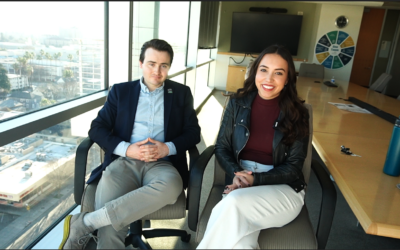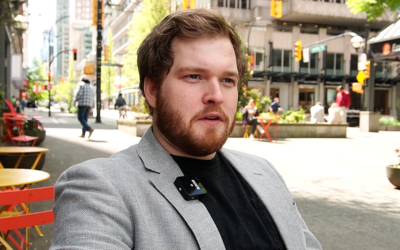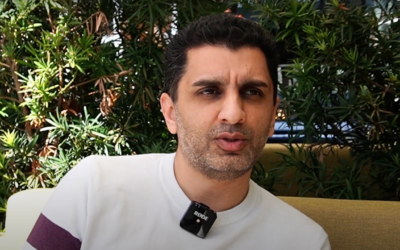Ask The Experts: Implementing A Comprehensive Technology Plan Within the Seattle Department of Transportation
Welcome to another episode of Ask the Experts! This time, we explore the benefits and challenges of implementing a comprehensive technology plan in a government transportation department. Our guest expert, Jason Cambridge shares valuable insights on the wins, challenges, and lessons learned while implementing a comprehensive technology plan within the Seattle Department of Transportation (DOT).
 Meet the Expert: Jason Cambridge is the Transportation Technology and Data Manager for the City of Seattle. He is a results-driven leader with extensive experience evaluating, administering, and operating transportation technology and data systems. His expertise spans designing, installing, testing, and configuring mission-critical infrastructure. This incudes hardware, software, researching, analyzing, and developing operational and functional requirements.
Meet the Expert: Jason Cambridge is the Transportation Technology and Data Manager for the City of Seattle. He is a results-driven leader with extensive experience evaluating, administering, and operating transportation technology and data systems. His expertise spans designing, installing, testing, and configuring mission-critical infrastructure. This incudes hardware, software, researching, analyzing, and developing operational and functional requirements.
What is a Comprehensive Technology Plan?
A comprehensive technology plan is a strategic document that outlines an organization’s goals and objectives for technology implementation and use. It provides a roadmap for leveraging technology to achieve organizational objectives and enhance business processes including communication, data management, and productivity. By implementing innovative technologies and adopting best practices, DOTs can improve the quality and accessibility of transportation services for the public.
Key Benefits of a Comprehensive Technology Plan
A comprehensive technology plan can bring numerous benefits to a DOT. For the City of Seattle first and foremost, it provides a framework for prioritizing and allocating resources for building out technology systems. This allows the DOT to work more efficiently with other departments, regional partners, private businesses, and emerging mobility service providers.
Seattle’s technology plan helps ensure limited resources are dedicated to the highest priority items, offering the highest return on investment.
“We can focus on the projects that help us reach our core goals and align with our core values. We set up a scoring system to rank our projects to help us prioritize and sequence the project delivery and investments correctly while maintaining the ability to be nimble and flexible. So those are some of the key benefits of this plan.” – Jason Cambridge, Transportation Technology and Data Manager, City of Seattle.
By focusing on core goals and values, Seattle’s DOT delivers projects that align to achieve its desired outcomes.
“Does this solution enhance safety? Enhance mobility by providing more reliable transportation choices? Does it somehow improve sustainability by reducing our climate impacts? In the end, we’re able to have all of these initiatives and then have this kind of equal weighting and scoring that we utilize to prioritize each project with our vision and goals.” Jason Cambridge, Transportation Technology and Data Manager, City of Seattle.
A Plan That Goes Beyond Emerging Transportation Trends For Seattle DOT
The City of Seattle’s comprehensive technology plan focuses on addressing emerging transportation trends. The plan prepares the city for the emergence of autonomous vehicles, greater electrification, and advanced solutions such as AI and video analytics.
However, the plan has evolved to become more comprehensive and is not limited to addressing emerging transportation trends.
“We realized, hey, let’s make it more comprehensive than just talking about emerging transportation trends,” says Cambridge.
“Let’s also include our business applications, our maintenance, and operations, things that typically don’t get addressed with a technology plan.”
The city recognized the dependencies and budget implications between various systems, which is why Seattle is taking a more holistic approach. They’re moving away from a siloed approach to ensure that all areas of technology are addressed and integrated effectively.
This comprehensive approach allows Seattle’s DOT to better serve its residents by ensuring its operations and services run cohesively.
Cambridge says the goal of building this comprehensive plan is to assess their current state and identify the ideal future state in order to provide a roadmap to help get there.

Image source: Adobe Stock
Breaking Down Silos
In building their comprehensive technology plan, Seattle’s DOT recognized the need to break down information silos. Silos that were created by focusing on individual areas of the business.
Dependencies between various systems, and budget implications led to the accumulation of technical debt. Making the technology plan more comprehensive avoids building more debt in one area and addresses emerging opportunities. This approach involved assessing current needs in multiple areas, such as the intelligent transportation system, asset management, finance, HR, and other business processes.
By taking a holistic approach, Seattle aims to create a more efficient and effective transportation system that serves the community’s needs while embracing emerging technologies.
“We have an asset management system that we use to track and issue work orders to understand the current status of our investments and roads and bridges and sidewalks, and we have a paid parking program and websites that we use for the community to interact with our services and understand who to connect with. But these solutions were all developed using separate plans. We built these silos with this approach and we don’t want to continue doing that. We’re hoping to break those down.” – Jason Cambridge, Transportation Technology and Data Manager, City of Seattle.
Achieving Buy-In Organization-Wide
Implementing a comprehensive technology plan in a government organization can present a variety of challenges. One of the biggest hurdles can be building awareness and support for the plan across all levels of the organization.
Different divisions and workgroups often have their unique perspective on what the organization needs to invest in and it can be difficult to prioritize and get everyone on the same page. Additionally, government organizations often have a mix of legacy and vendor-supported solutions, as well as custom-developed tools to serve specific needs. This can create dependencies between systems and make it challenging to integrate new technologies.
To overcome these challenges, the City of Seattle took a systematic, committee-driven approach to identify and prioritize projects while maintaining the flexibility to adapt to changing needs.
“One thing we did was establish an executive steering committee. So we have representation from leaders and the division heads in our organization helping provide oversight for the project. We created a technology governance structure, where each division has a representative and we meet monthly to discuss not only this technology plan but other relevant issues that might impact all of us. I think, because of that, hopefully, everybody feels like they have a seat at the table and understands that their recommendations are being heard and acknowledged.” – Jason Cambridge, Transportation Technology and Data Manager, City of Seattle.
Building awareness and understanding of the plan throughout the organization is also key to gaining buy-in and support.
The Role of Data and Data Management
In today’s technology-driven world, data analysis and management have become critical elements of any comprehensive technology plan. The City of Seattle’s Department of Transportation recognizes that and is focusing on data governance and establishing a framework for data use.
With an increasing volume, variety, and sources of transportation data, organizing, processing, and storing it are crucial in supporting an advanced transportation network.
Having the right data empowers decision-making for the City of Seattle. Maintaining overarching data governance and having effective data management tools is an important element of their comprehensive transportation technology plan.”
We’re working with you (UrbanLogiq) on climate mitigation, for example. So if it’s going to help the city reach our climate reduction goals, before making large investments, we have to have the right data, we have to know what the challenges are, we have to know what the transportation trends are, know how many vehicles are out there, what types of vehicles are they, and not just looking at historical data, but future trends as well.” – Jason Cambridge, Transportation Technology and Data Manager, City of Seattle.
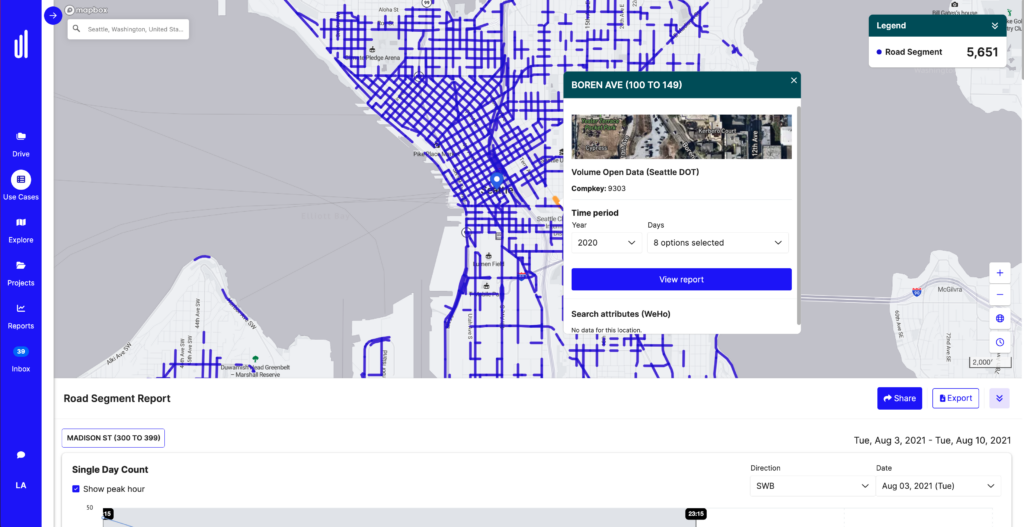
Traffic volume counts in the UrbanLogiq Platform
Adaptability is Key
Measuring the success of a comprehensive technology plan is different for every agency. For the City of Seattle, adaptability is crucial. According to Cambridge, creating a massive static document isn’t the answer.
Instead, they created an online, adjustable, and shareable plan that can change and adapt to meet the DOT’s evolving needs. The success of Seattle’s comprehensive technology plan focuses on meeting the changing needs of the transportation network. Not on what was said when the plan was created.
Success, in this case, is about being flexible and fluid, as managing an active transportation network requires constant adaptation.
“We can’t predict the future. We just lived through a pandemic, which perhaps forever changed traffic patterns with the rise of remote work. Also, we encountered a major issue with one of our bridges, and it closed unexpectedly for a couple of years. That changed the way we had to dedicate our resources and respond as an agency. So, for us, one of our successes is creating an adjustable plan” – Jason Cambridge, Transportation Technology and Data Manager, City of Seattle.
Keeping up with the latest Transportation Technology
It can feel like a full-time job to follow the latest technologies, data management tools, and AI. For many organizations, it’s a daunting task.
To mitigate that, the City of Seattle determined that vendor-provided solutions are a valuable resource.
“I don’t have to ensure that our staff, our software developers, are experts in the latest cloud technologies. We can just remain the business experts and the transportation experts, and work with the vendors who have the data scientists and are working with machine learning and AI, providing these proven solutions. That’s the direction we’ve gone with a lot of our recent data-related acquisitions.” – Jason Cambridge, Transportation Technology and Data Manager, City of Seattle.
This approach helps save time and resources while ensuring that the latest technology is used to provide the best transportation solutions.
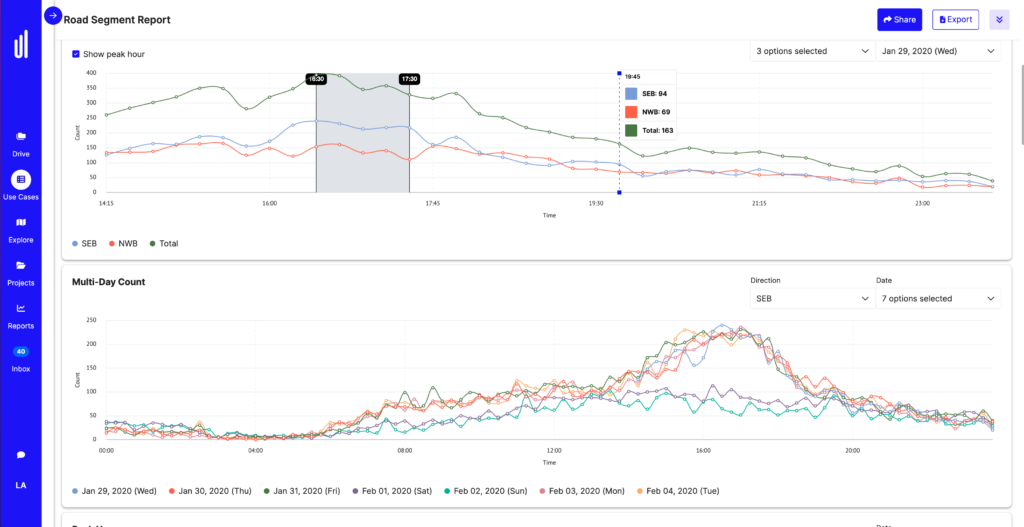
Vehicle travel times visualized in the UrbanLogiq Platform
How UrbanLogiq can help
UrbanLogiq’s mission is to break down data silos and help government agencies make the most out of their existing data. Our easy-to-use data platform creates one common operating picture of each community. This empowers public officials to make data-driven decisions faster and cheaper than traditional methods. UrbanLogiq brings together the best of data science, data engineering, and big data to help build safe and equitable communities.
About Ask the Experts
Urbanlogiq’s ‘Ask the Experts’ series launched in the summer of 2022. It taps into the knowledge of industry experts to explore a variety of subjects. These include engineering, data science, public safety, transportation planning, and more, offering insights on a variety of timely topics. ‘Ask the Experts’ sets out to provide valuable information and resources through in-person or virtual interviews and blogs.
If you would like to be a guest on the series, contact UrbanLogiq’s Communications Manager, Luisa Alvarez.
